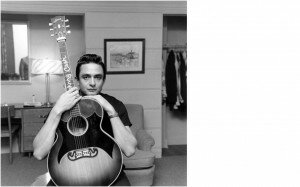by , senior marketing manager, Skive
It is an important part of Skive’s business to partner with agencies that we admire and who have complimentary skillsets. We regularly go into the agencies to present new work we are doing but also our observations on digital marketing. I was recently asked to give a presentation on “The Future of Digital” to the brand teams at a large PR agency.
I started off by asking how many people in the room are on twitter. About 80% said that they were and a fair proportion of them said they use it regularly, at least once a day. I then asked them how many of them were on it a year ago and the number was greatly reduced. The point is this shows how quickly technology changes and that as digital marketers we need to stay ahead of the game. The purpose of this blog post is to look at what is the future of digital and what we might expect from it in the near future.
First off we’ll start off with a quick reality check. Twitter is great right? I mean it’s everywhere, you can’t move for it. I think this is very true if you work in marketing and you spend all day plugged in to tweetdeck for the latest Social Media tidbit from Mashable or other. I’m not dumbing down its importance to those interested in the realtime web but none of my friends outside of work are on it. Let’s put it another way. Farmville has over 80 million active users that are more than the number total twitter users. When did you last suggest to a client that they try and leverage Farmville as a viable social platform?
Let’s put it another way, there are more iPhone users than there are twitter users and even then iPhones represent 3% of the total mobile phone market. And if we take it one step further some will be surprised to know that there are more smartphones in the world than there are facebook users – that’s getting on for 400 million users.
My point is that we can get carried away with the importance of a new and/or fashionable technology and forget the value and opportunity in using existing channels to create exciting and engaging experiences. It is for this reason my focus on the future of digital isn’t an exploration of mind controlled gaming, the latest AR or Foursquare. Instead I want to look at the simple and sometimes beautiful uses of existing platforms in the pursuit of creating not only successful but brilliant and memorable marketing. I will conclude that using technology combined with a great story and a killer idea is the most powerful combination we have.
A key trend that was brought to me by @worldhood is the idea of Branded Utility which centres around the idea that Rory Sutherland purported that “it’s a lot easier than to be repeatedly useful than it is to be repeatedly funny”.
The great granddad of this concept is the Michelin guide, it was dreamed up as a way of encourage people to go out motoring to discover new places to eat in the understanding that they wore their car tyres out. It was a simple idea and yet most likely lead to many a drink driving death, but let’s not dwell on that. The fact is that the brand sits at the heart of the object’s function.
More recently we can see the motoring theme echoed in Fiat’s eco-drive which developed proprietary technology that monitors how green your driving is and feeds back to you at the end of your drive through your computer. You can then share your results with friends and this creates a sense of community around greener driving.
Nike Running through Nike+ have created a similar community, not for drivers but fitness fiends who seek to pit themselves against the world of runners with a nifty trainer i-Pod synch up. It is the balance of technology and social here that is so enthralling.
The next trend that I think will continue to grow in the coming years is Creativity in Social Media. All too often the potential of a brand getting into social media means a reflex “getafacebookpageandatwitterprofile” from their agency. There are tons of brands not on these platforms and I’m not arguing that they shouldn’t be, but soon they will be, and the playing field will be levelled.
Brands don’t need profiles and presences; they need a strong creative idea that will resonate across social channels. The traditional advertising industry didn’t continue to grow and produce amazing work because they helped brands merely populate print, TV, cinema etc. They had to innovate and push creative boundaries and it’s no different with social media. I think Burger King’s Whopper Sacrifice and Ikea’s Malmo facebook campaigns are among the most brilliant I’ve seen at doing this.
The next trend isn’t a trend so I’m cheating I guess. Storytelling is a fundamental part of who we are as people and as a culture and it is the strongest tool we have as marketers. Now with the dawn of digital a new form of storytelling has occurred which is Transmedia Storytelling or cross platform or even alternative reality gaming – it doesn’t really matter what you call it.
The granddaddy of transmedia storytelling in a digital context is The Blair Witch Project which saw the development of the film’s back-story being told across several different websites talking of sightings and folklore that underpins the films eerie feel in the run up of its release. Whilst not wanting to be taking to credit away from the film itself, it was a huge success and no small part due to the story being told on a different platform supporting the main narrative.
More recently Skive with Publicis Modem produced Start Thinking Soldier for the British Army which was a recruitment mechanic which took potential recruits on a journey from TV, radio and print through to a myriad of online missions that tested their mettle in a variety of different combat situations combining real footage and CGI. The resulting engagement meant the Army hit their recruitment targets at a time of two bloody and public conflicts for the first time in 12 years.
Secret Cinema is a small business that was born from Future Shorts and runs guerrilla screenings of a wide variety of counter culture movies in secret locations. They slowly reveal clues across a variety of platforms and the crowd have to collaborate to find the location of the screening. A showing of Warriors in London attracted 1000’s audience members all dressed up in the attire of the Warrior gangs from the films.
Why So Serious is most likely the most impressive transmedia event to date creating a community of Gothamites preceding the launch of The Dark Knight – the only irony being that the movie might have actually been good if the same care and attention had gone into the casting and the script as the marketing.
Collaborative Social Art
This is probably called something else but this title is explanatory enough. Usually digital is responsible for amazing interactive and engaging and exciting experiences but rarely beautiful. Because most messages are fighting so fiercely to be heard over the noise they end up having to be bullish and aggressive to stand out. These examples are ones that I find actually moving; they can resonate and create a feeling of wonder. They are at the opposite end of the emotional scale to most AR and banal tweets and they don’t wow us as much as they woo us.
The Johnny Cash Project invites fans to recreate every single frame of the video using a fairly rudimentary painting tool. The end result is an emotional and stirring video, I believe at the cornerstone of all great creative work is love and effort. If you take out those you’re unlikely to produce anything of real worth. And I think this is what is so powerful about this video, each frame is painstakingly crafted and I think it really shows. Maybe I’m over sensitive to such things but often when purely dealing in digital for brands you can lose sight about what is genuinely exciting about online.
That said Sour’s video is trashing and garish but it’s a riot nonetheless, it has the same spontaneity as the OK Go treadmill video and unlike the Johnny Cash Project both creatives in the video totally overpower the less than remarkable song writing.
The YouTube Symphony Orchestra is a different beast but no less inspiring. The orchestra consists of players from all over the planet who submitted their auditions on YouTube. At orchestra level musicianship you can tell if someone has got the chops pretty quick and the conductor was able to whittle down thousands of submissions to a full orchestra for a one off performance in New York. This is what is great about digital; a simple idea can spark off a massive surge of activity across the planet which ends up creating a beautiful artistic experience that could have not have happened 5 years ago.
I’ll finish with In Bb (in b flat) as the greatest example of collaborative social art I’ve seen. A musician has asked people to submit them playing their instruments in Bb as a youtube video. The videos were then chosen and arranged in a grid. The user is then invited to play them in a random order and the tonality ensures that it never sounds “off key” there are 1000’s of combinations of these instruments and millions if you add the extra dimension of different start times. The end result is often similar but never short of moving. All the musician play fairly ambient parts so they complement each other well. I can see this being developed a lot and I’m sure a brand will smear some marketing communication all over it in a bid to flog trainers to 16 year olds but here it is in its infancy, pure and undiluted.
In Conclusion
1. It’s easier to be repeatedly useful than repeatedly entertaining
2. Social Media doesn’t just mean facebook/twitter
3. The Story is the most powerful tool we have
4. Being innovative in marketing doesn’t have to mean just using the latest technology










